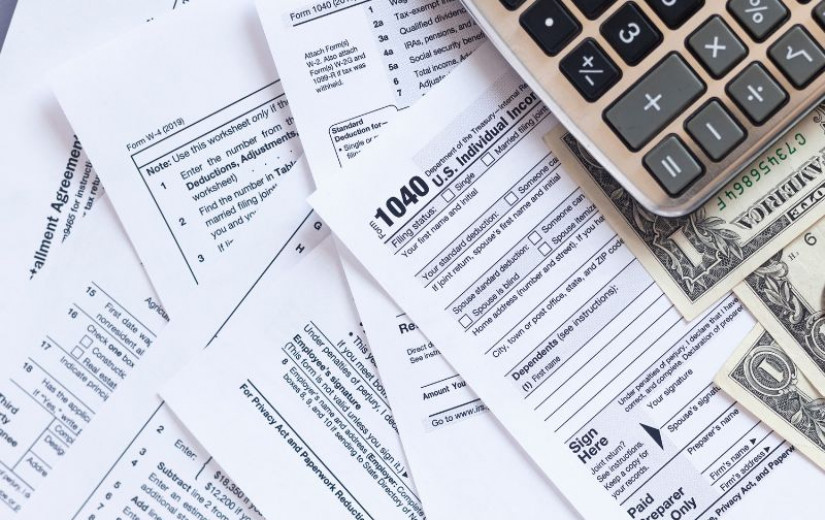Addressing Data Center Growth Constraints Key to U.S. Innovation, Leadership in AI
Power Magazine ^ | April 4, 2025 | Andrew Fedele
Posted on 04/06/2025 10:35:52 AM PDT by ProtectOurFreedom
As the artificial intelligence (AI) boom drives exponential demand for data centers, the United States’ position as an AI leader is at risk without immediate action to address growth constraints.
The “transition toward cloud-based services and generative AI applications [is forecast to drive] a 37% compound annual increase in AI spending out to 2032,” according to Bloomberg. The significant growth comes at a time when supply chain constraints are limiting revenue growth among the largest U.S. data center developers—known as hyperscalers. In the past year, hyperscalers have been flagging the data center supply chain as a headwind in their growth during quarterly earnings calls. If left unchecked, the U.S.’s progress and position as the world leader in AI innovation could be at risk.
The U.S. has 45% of all data centers globally by count, but the products that fill these centers are often sourced from outside the U.S. Data centers require a complex mix of chips, servers, networking equipment, storage, cooling and power, and many other components to run. The four primary limitations on data center growth are:
- the supply of chips and other production goods
- tariffs
- land availability reliable electricity
Supply chain bottlenecks for semiconductor chips—most of which are manufactured in Asia—play a large role in the squeeze on data centers, because such chips are central to meet data center redundancy needs. The U.S. CHIPS and Science Act in 2022 allocated $280 billion in funding to stimulate domestic chip production. But as it takes several years to stand-up new semiconductor manufacturing facilities; those funded by the CHIPS Act likely won’t be operational until 2028 or 2029. The U.S. is leading its peers in the onshoring movement for chip production. The next largest government chip stimulus was the European Union’s European Chips Act in 2023, which allocated €43 billion ($47 billion) to the sector.

Source: Bloomberg Intelligence, Peterson Institute of Economics, analysis of U.S. Census Bureau data by Martin Chorzempa, RSM US LLP
...Canada is the primary foreign supplier to the U.S. of steel and aluminum, used in racking and data center buildouts. Some of the hyperscalers’ data center operations across the U.S. also are located in areas that are known to import some Canadian power, including in—but not limited to—Oregon, Washington, New York, Massachusetts, Ohio, and Illinois.
In June of 2024,, “U.S. data centers will represent 6.6% of all U.S. electricity consumption” by 2028. Their research went further, citing vital data center regions that were on the brink of running out of reliability-rated power. The estimates included Northern Virginia by 2027; New Albany, Ohio by summer 2028; Silicon Valley by 2034; and noted that Dallas, Texas, already exceeds its supply. According to a December 2024 report from the U.S. Department of Energy, data centers in the U.S. consumed 176 terawatt-hours in 2023, or 4.2% of U.S. electricity consumptions. To put that in perspective, our data centers are consuming more than 54% of the total energy consumed by the entirety of Mexico and its 130 million citizens during that year. Also significant is the rate of demand growth (Figure 2). In the last 15 years, the U.S. electricity demand growth was nearly flat at just 0.1% annually. Now looking at 2% to 3% per year of growth—higher in data center-heavy regions—those growth rates feel staggering for an ecosystem that is simply not used to it.

Source: RSM US LLP, U.S. Energy Information Administration
The need for reliable power has led many hyperscalers to explore a “behind-the-meter” model, where they own and operate their own power sources. While they still need to connect to the grid for resiliency against outages, this model offers more control and easier forecasting for future scaling. The main challenge with this strategy, however, is the construction time required.
Nuclear power plants, favored by technology companies for being both highly reliable and having carbon-free emissions, can take more than a decade to build and often face public pushback. Renewable sources such as solar and wind—when paired with battery storage—can be a viable option to bring large amounts of power online in as little as 12 to 18 months. Natural gas would be a viable source, but the longer timeline of four to five years to bring a new natural gas plant online makes that reality more challenging.
Power isn’t the only source of data center energy consumption. As of 2023, McKinsey estimated that 40% of all data center energy goes towards cooling. Cooling is a central part of data center management to prevent damage, equipment failure and maintain performance. In an industry expected to provide uptimes of 99.999% (or the equivalent of 5.25 minutes of downtime per year), overheating can have dire affects. In 2023, a data center in Singapore overheated, resulting in 2.5 million bank transactions to fail across two multinational banks. Water-based methods to cool chip facilities are becoming increasingly popular solutions, which will have implications for local water utility capacity, expansion and efficiency.
U.S. data centers have historically been huddled around major internet exchanges that also meet the energy needs noted above, while being shielded from major environmental risks such as natural disasters. However, as regions such as Northern Virginia, Oregon, Phoenix, and Dallas/Fort Worth become saturated, developers are looking to alternative locations for data centers.
The state regulatory landscape is evolving, with legislators in several states planning and proposing bills aimed at ensuring data centers pay their fair share of energy bills and in some cases setting renewable energy use goals for data center customers.
TOPICS: Business/Economy; News/Current Events
KEYWORDS: ai; datacenters; electricity; power

Click here: to donate by Credit Card
Or here: to donate by PayPal
Or by mail to: Free Republic, LLC - PO Box 9771 - Fresno, CA 93794
Thank you very much and God bless you.
The AI Revolution is going to be stymied by lack of reliable electricity. The greeniacs got the "New Green Deal" going without thinking what would happen when you can't build enough reliable capacity to power an industrial economy 24x7 and without anticipating the power hunger of AI and Data Centers.
The CHIPS Act probably has as much bureaucratic red tap as does the effort to build out high speed broadband and EV chargers. I doubt the CHIPS Act will result in much new chip capacity by 2030. The tariffs could result in far more semiconductor fabs being onshore than the CHIPS Act.
The author is an idiot for thinking that battery storage is going to make wind and solar a near-term solution.
To: ProtectOurFreedom
“The author is an idiot for thinking that battery storage is going to make wind and solar a near-term solution.”
Permitting is quick and easy for solar. They could throw money at the problem, buy a shipload of solar panels, and have them installed in a year or two. It won’t be cost effective or reliable, but it can be quick.
2 posted on 04/06/2025 10:58:45 AM PDT by BeauBo
To: ProtectOurFreedom
We can use AI to think of ways to solve this.
3 posted on 04/06/2025 11:00:20 AM PDT by Larry Lucido (Donate! Don't just post clickbait!)
To: ProtectOurFreedom
4 posted on 04/06/2025 11:04:07 AM PDT by Openurmind
To: BeauBo
AND it will be effective as long as nobody wants to use the data center at night. There goes our midnight FR sessions!
There ARE NO practical, affordable utility-scale battery technologies. The ENTIRETY of all batteries installed in the USA could power the country for 10 seconds.
5 posted on 04/06/2025 11:17:40 AM PDT
To: Larry Lucido
“We can use AI to think of ways to solve this.”
LOL...I like your thinking! You’d make a good engineer.
6 posted on 04/06/2025 11:18:09 AM PDT by ProtectOurFreedom (PDJT doesn’t just walk through the Valley of the Shadow of Death. He swaggers.)
To: ProtectOurFreedom
7 posted on 04/06/2025 11:34:34 AM PDT by Larry Lucido (Donate! Don't just post clickbait!)
To: ProtectOurFreedom
On that last, I always say here, you can’t power modern civilization with wind and solar, it cannot be done. Adding batteries to that fantasy changes nothing. Idiots who can’t count and understand nothing of basic Thermodynamics, let alone power generation, transmission, and distribution at scale, are doing nothing more than repeating Green energy platitudes when they bring batteries into the discussion.
8 posted on 04/06/2025 12:19:10 PM PDT by FreedomPoster (Islam delenda est)
To: FreedomPoster
I spent my career in power and agree with you 100%. People think power comes out of the wall plug.
People have no clue about the sheer amount of materials needed for batteries, materials largely sourced from not-nice places around the world. Materials that are fairly rare in the earth’s crust.
People just don’t get the fact that a battery system is a power plant that would operate at night or cloudy days AND the solar cells are a separate power plant that operates when the sun shines. It’s pretty obvious that you now need to build TWO power plants whereas before you only had to build ONE. Talk about waste!
9 posted on 04/06/2025 12:22:58 PM PDT by ProtectOurFreedom (PDJT doesn’t just walk through the Valley of the Shadow of Death. He swaggers.)
To: ProtectOurFreedom
I agree that solar can’t compete with hydro, nuclear, natural gas or coal for cost effectiveness or reliability; and reliability in particular is a key requirement for data centers.
10 posted on 04/06/2025 12:40:22 PM PDT by BeauBo
To: ProtectOurFreedom
Dominion Energy in Northern Virginia is expanding its grid here, but the NIMBYs are already complaining about power lines passing within 1/2 mile of schools.
11 posted on 04/06/2025 3:32:18 PM PDT by VanShuyten ("...that all the donkeys were dead. I know nothing as to the fate of the less valuable anima)
Disclaimer: Opinions posted on Free Republic are those of the individual posters and do not necessarily represent the opinion of Free Republic or its management. All materials posted herein are protected by copyright law and the exemption for fair use of copyrighted works.
FreeRepublic.com is powered by software copyright 2000-2008 John Robinson









